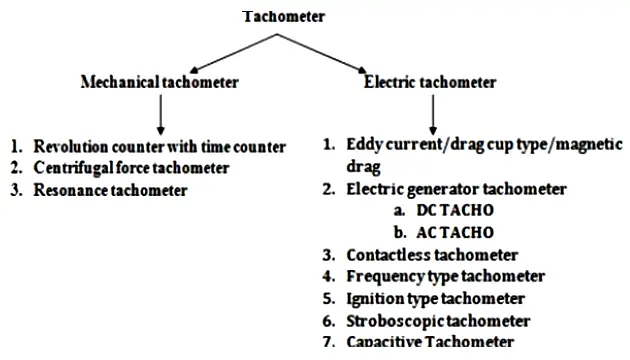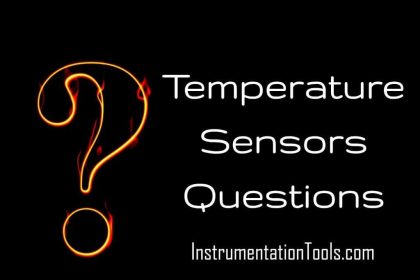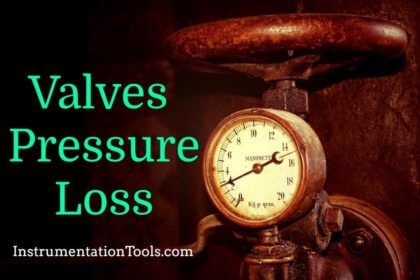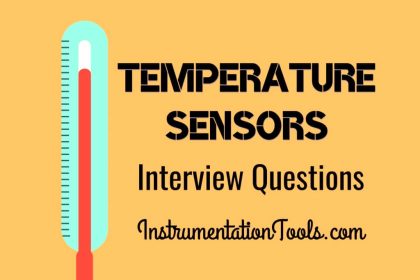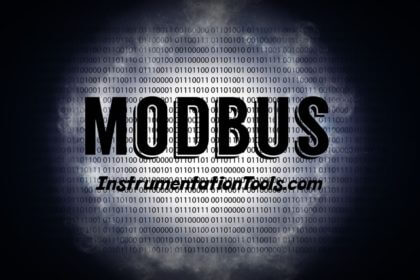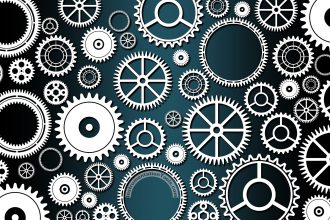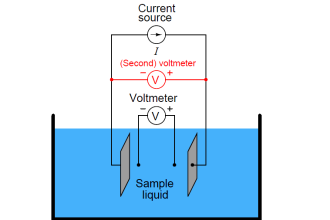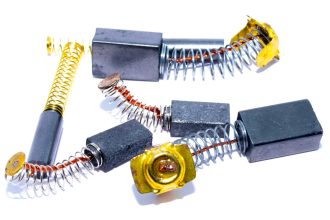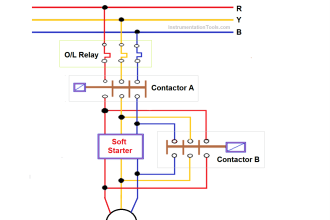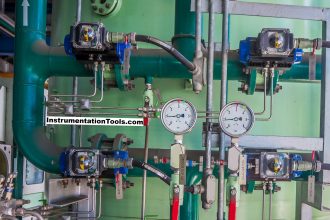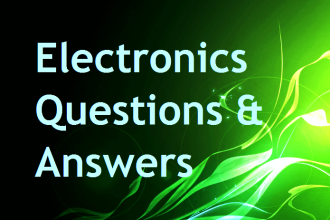Industrial Instrumentation Questions & Answers
Measurement of Force, Torque & Speed
What is a Stroboscope ?
The stroboscope is a simple, portable manually operated device which may be used for measurement of periodic or rotary motions.
A stroboscope having a scale that reads in flashes per minute or in revolutions per minute; the speed of a rotating device is measured by directing the stroboscopic lamp on the device, adjusting the flashing rate until the device appears to be stationary, then reading the speed directly on the scale of the instrument.
What are the applications of load cell?
It is also called as FORCE METER.
A load cell is a device that converts force into pressure. If the area on which the load is placed is known then the calibration of force can be done directly.
Applications : Measurement of torque, weight, force, pressure etc.
What is the principle of DC tachogenerator?
“Electromagnetic induction”.
“An emf is induced due to change in permanent magnetic flux. The induced emf is proportional to flux and rotational speed”.
DC tachogenerator converts mechanical energy into electrical energy when a conductor moves in a magnetic field.
Define Force
Force is defined as “a mechanical quantity, an influence that causes an object to undergo a certain change, either concerning its movement, direction, or geometrical construction”.
Force may be defined as “a cause that produces resistance or obstruction to any moving body, or changes the motion of a body, or tends to produce these effects”.
Force measurement is also done by electric means in which the force is first converted into displacement at an elastic element and the displacement is measured. A vector quantity has both magnitude and direction. Newton’s second law states that “the net force acting upon an object is equal to the rate at which its momentum changes with time.”
If a force of magnitude, F, is applied to a body of mass, M, the body will accelerate at a rate,
A (m/sec2), according to the equation: F = MA. Unit of force is the Newton (S I unit)
Also Take Test on : Measurement and Instrumentation
What are the types of Load cell?
- Hydraulic Load Cell
- Pneumatic Load Cell
- Magneto – Elastic Load Cell
- Piezo Electric Load Cell
- Strain Gauge Load Cell
What is the principle of Strain Gauge measurement?
This type of load cell converts the load acting in them into electrical signal. The strain gauges are bonded onto the beam that deforms when weight is applied.
This change in the dimension of the strain gauge causes its resistance to change. This change in resistance becomes a measure of the applied force / quantity.
Define magneto-elastic effect
Magneto-elastic load cell works in principle of “Magneto elastic principle” called as Villari effect.“
When a ferromagnetic material undergoes a mechanical stress, it changes the magnetic permeability of the material. The level of change in permeability property is proportional to applied force / stress.”
Depends on permeability property of magnet defined as “The measure of the ability of a material to support formation of magnetic field within itself”
This effect is based on the change in permeability of ferromagnetic material under applied stress.
Define the principle of Capacitive Tachometer.
Capacitive Tachometer uses the principle of charging a capacitor and discharging through a meter alternatively. The average discharge current would be proportional to the speed.
What is pressductor?
Magneto-elastic type load cell is called pressductor .The degree of change has a direct relationship with applied stress or force.
Give few Applications of Drag-cup tachometer
Drag-cup tachometer is used in Automobiles which measure the angular speed of the wheel, in Aircraft Engines, in measuring locomotive speed.
What is meant by Strobotron?
The Stroboscope consists of a source of flashing light whose frequency can be varied & controlled .This Source is called strobotron.
An electronic stroboscope uses a (variable frequency flashing light) multivibrator type circuit to produce flashes of light at known and adjustable rates.
The variable frequency flashing light source is called strobotron.
What is revolution counter?
Revolution counter is a device for counting or recording the number of revolutions made by a rotating shaft of motor or engine.
What is prony brake?
The prony brake is a device which is most popular for determining the torque exerted by engines or motors .
It consists of a hollow drum attached to the motor shaft and an arm attached to a band with friction which passes around the drum. The free end of the arm is attached with the hanging scale.
In a stroboscopic tachometer if four stationary marks are used, then what will be the speed of the tachometer
A stroboscope is made to flash directly on the mark. The flashing is adjusted until the mark appears stationary even though the shaft rotates.
At this condition, the speed of shaft (n in rpm) is equal to frequency (f in Hertz) of light flashed on shaft. i.e.,
n = f
In general, if no. of marking in shaft is „m‟, then n = f/m
If no. of marking is 1, then n = f
If no. of marking is 2, then n = f/2
If no. of marking is 3, then n = f/3
Typically a gas-discharge or solid-state lamp is used, because they are capable of emitting light nearly instantly when power is applied, and extinguishing just as fast when the power is removed.
Speed n= f/4, Here f= frequency in hertz.
What are the factors affecting the accuracy of force measurement?
Force must either be reasonably constant in value.
Force must act perpendicular to the platform of scale.
The measurement may require correction for local variation in gravitational constant. The delicate parts of force measuring devices must be properly maintained.
What are the advantages of stroboscope?
Used to measure periodic or rotary motions without making contact with rotating body or disturbing the equipment under test.
Mechanical equipment may be observed under actual operating conditions with the aid of stroboscopes.
Parasitic oscillations, flaws, and unwanted distortion at high speeds are readily detected.
The flashing-light stroboscopes employ gas discharge tubes to provide a brilliant light source of very short duration.
Define magneto-elastic effect?
- Magneto-elastic load cell works in principle of “Magneto elastic principle” called as Villari effect.
- “When a ferromagnetic material undergoes a mechanical stress, it changes the magnetic permeability of the material. The level of change in permeability property is proportional to applied force / stress.”
- Depends on permeability property of magnet defined as “The measure of the ability of a material to support formation of magnetic field within itself”
- This effect is based on the change in permeability of ferromagnetic material under applied stress
Also Read : What is a Weigh Feeder ?
What is tachometer?
A tachometer (revolution-counter, tach, rev-counter, RPM gauge) is an instrument measuring the rotation speed of a shaft or disk, as in a motor or other machine.
The device usually displays the revolutions per minute (RPM) on a calibrated analogue dial, but digital displays are increasingly common.
What are the classifications of tachometer?
Measurement of Acceleration, Vibration and Density
What is seismic Instrument?
A system which consists of a mass- spring and damper combination housed in a chamber is called seismic instrument.
Mention the quantities required to be measured in Vibrating system?
- Acceleration,
- Velocity &
- Displacement
Give different modes of Seismic instruments?
- Displacement mode: with large Mass and soft Spring
- Acceleration mode: with soft mass and stiff spring
Give the classification of Calibration of vibrational pick-up?
- Constant Acceleration method,
- Tilting support method,
- Centrifuge method
- Sinusoidal motion method and
- Transient motion method
Define Density?
Density of a material is the ratio of weight of the material to the unit volume.
Density of liquids and gas depends on temperature and pressure. Expressed in kg/m3.
Give some units of density?
Kg/m3, Kg/liter, g/cm3, ounce/inch3, pounds/inch3, pounds /gallon, pounds/bushel, slug/feel
What is API scale
American petroleum institute introduced the method of expressing the specific gravity called as API degree in 1921.
Degree API=(141.5/SG at 60F)-131.5
What are the applications of bridge type gas densitometer?
To determine the mass and volume of products, To evaluate the quality of product, To determine calorific value of fluids
Define viscosity
The resistance which arises from the lack of slipperiness of the of liquid other things being proportional to the velocity of liquid. This lack of slipperiness is called viscosity.
What is non-Newtonian fluid?
If the force flow relation is of fluid non linear, it does not obey the Newton‟s law of viscosity and the fluid is called Non-Newtonian fluid.
Define Kinematic viscosity.
Kinematic viscosity is the ratio of absolute viscosity (μ)to density (ρ) of the fluids.(ν)
What is specific viscosity?
It is the ratio of absolute viscosity of the fluid to absolute viscosity of the standard fliud at constant temperature.
Define Viscosity Index.
It is an empirical number that indicates the effect of change of temperature on viscosity of a fluid., the larger viscosity index indicates lower sensitivity to temperature.
What are the disadvantages of LVDT?
- Sensitive to temperature,
- Measurement not perfectly linear,
- Not feasible for long range measurement.
Define Vibration?
A force which oscillates about some specific reference point, generally continuous and time varying with some degree of repetitive nature is called vibration, expressed in terms of Cycles /sec, strokes/minute, m/s,..
Define density and what are its units?
Density of a material is the ratio of weight of the material to the unit volume.
Density of liquids and gas depends on temperature and pressure.
Expressed in Kg/m3, Kg/liter, g/cm3, ounce/inch3, pounds/inch3, pounds /gallon, pounds/bushel.
Define Co-efficient of viscosity?
The force required per unit area to maintain unit difference of velocity between two parallel plates.
F=ηA v/d ; η =Co-efficient of viscosity
What is LVDT ?
It is the most widely used inductive transducer to translate linear motion in to electrical signal.
The differential output voltage of the secondary winding of the LVDT is proportional to the vibrational displacement experienced by the mass caused due to acceleration; the differential output voltage becomes a measure of acceleration.
Write the demerits of bridge type gas densitometer.
They have problems of measuring densities of multiphase liquids.
Pressure Measurement Questions
Define Absolute pressure
The force exerted by the fluid per unit area of the wall of the container is called the absolute pressure.
Give some units of pressure
Pascal ,psi, kg/cm2 , bar etc.
State the principle of U- tube manometer
The U-tube manometer is the simplest measuring instrument used for gauge pressure measurement by balancing the pressure against the weight of a column of liquid.
Explain the principle of bourdon tube pressure gauge
Bourdon tube is a device that senses pressure and converts the pressure into displacement.
Since the bourdon tube displacement is a function of the applied pressure it may be amplified and indicated by a pointer
What are the advantages of bellows?
Advantages:
Simple construction‚ Moderate price‚ useful for measurement of low, medium, high pressures‚ Used to measure absolute, gauge, differential pressures
State the principle of Diaphragms
The pressure to be measured is applied to the diaphragm, causing it to deflect. That deflection is being proportional to the applied pressure.
What are the types of diaphragms?
- Flat type and
- Corrugated type.
State the principle of LVDT and STRAIN GAUGE
LVDT: The differential output voltage of the secondary winding of the LVDT is proportional to the vibrational displacement experienced by the mass caused due to acceleration; the differential output voltage becomes a measure of acceleration.
Strain Gauge: When the strain gauge is stretched or compressed, its resistance changes on the account of the fact that both length and diameter of the strain gauge changes. This change in resistance will be proportional to the torque in the shaft.
State the principle of capacitive pressure transducer
The output of a parallel plate capacitor depends on the gap between its movable and fixed plates.
Due to pressure, if the gap between the plates is altered, its capacitance also changes.
This change in capacitance becomes a measure of pressure.
Write the advantages of capacitive pressure transducer
Advantages:
Simple construction‚ useful for measurement of low, medium, high pressures and Used to measure absolute, gauge, differential pressures
State the principle of Piezoresistive pressure sensor
When a wire is subjected to pressure from all sides its electrical resistance changes.
This change in resistance occurs due to the distortion produced in the crystal when subjected to external pressure.
State the principle of Mc leod gauge
Compression of a sample of the low pressure gas to a level which is sufficiently high so that it can be read with the use of a simple manometer.
What are the advantages and limitations of Mc leod gauge
Advantages : Independent of gas composition and linear relationship exists
Disadvantages: It should obey boyle„s law and It cannot give a continuous output.
State the principle of thermal conductivity gauges
When a conductivity wire gets heated electric current flows through it. The rate at which heat is dissipated from this wire depends on the conductivity of the surrounding media.
State the principle of hot cathode type ionization gauge
The hot filament of the hot cathode gauge emits electrons into the vacuum, where they collide with gas molecules to create ions.
These positively charged ions are accelerated towards a collector where they create a current in a ion gauge detector circuit. The amount of current is proportional to the gas density.
What is the advantage of using well type manometers?
Even for a small displacement of liquid level in a well, there will be a very large change of height of liquid column in other limb. This results in increase in sensitivity.
Mention the application of dead weight tester.
Useful as a Master Calibration Equipment for testing Pressure based sensors
What are the demerits of dead weight tester
The area upon the weight force acts is neither the area of piston nor the area of the cylinder and Kinetic friction is applied rather than static friction
What are the merits of elastic type pressure gauge?
Elastic type pressure gauges are used for the measurement of very high pressure up to about 700 MN/m2.
Good accuracy and Maximum safety.
What is calibration?
The process for determination, by measurement or comparison with a standard, of the correct value of each scale reading on a meter or other measuring instrument.
Temperature Measurement Questions
Define temperature
Temperature of a substance is a measure of hotness or coldness of that substance.
It is the thermal state of a body which determines whether it will give heat or receive heat from other bodies
What are the types of filled in system thermometers
- Gas filled thermometer‚
- Liquid filled thermometer‚
- Mercury filled thermometer and
- Vapour pressure thermometer.
What are the sources of error in filled in systems
- Ambient temperature error‚
- Head or elevation error‚
- Immersion error‚
- Barometric error and
- Radiation error
State the principle of bimetallic thermometers
- All metals expand or contract with change in temperature
- The temperature coefficient of expansion is not same for all metals and therefore their rates of expansion or contraction are different.
State the principle of RTD
When RTD is subjected to temperature changes its resistance will change. This change in resistance becomes a measure of temperature.
State the application of RTD
Measurement of temperature‚ Temperature control processes‚ Temperature compensation etc.
What are the materials used in thermistors?
Materials are manganese, nickel, cobalt, copper, iron and uranium
What are the three electrical methods of temperature measurements?
- Thermistors‚
- RTD and
- Thermocouple
Explain about Immersion effect
If the bulb is not properly immersed or fully immersed and the head is not properly insulated, heat from the bulb is lost due to conduction. This causes the immersion error.
Explain about Radiation effect.
Radiation errors occur due to temperature difference between the bulb and other solid bodies around.
State the advantages and disadvantages of filled system thermometers
Advantages:
Simple construction‚ requires low maintenance‚ no need for electrical power and low cost
Disadvantages:
Need a large bulb for accuracy and sensitivity is much lower
What is the relation between Kelvin and centigrade?
Deg K = Deg C +273.15
Define boiling point, freezing point and triple point
Boiling point: Boiling point is the temperature at which the substance changes from physical state and becomes a gas.
Freezing point: Freezing point is the temperature at which the substance changes from physical state and becomes a solid.
Triple point: At a particular temperature and pressure at which three different phases of one substance can exist in equilibrium is known as triple point.
What are the difference between RTD and Thermistors
RTD : When RTD is subjected to temperature change its resistance increases and it can be measured usingbridge circuit. This change in resistance becomes a measure of temperature.
Thermistors : When thermistors are subjected to temperature change its resistance decreases and it can be measured using bridge circuit. This change in resistance becomes a measure of temperature.
Mention the merits of thermistors
Compact and inexpensive and good stability
Mention the application of thermistors.
Measurement of power at High frequency‚ measurement of thermal conductivity‚ measurement of temperature.
Explain about Elevation effect & barometric effect
If the thermometer bulb is placed at a different height compared to bourdon tube elevation error occurs.
The effect due to the change in atmospheric pressure is called as barometric effect.
Also Read : Load Cell Healthiness Checks
Define Seebeck effect?
When pair of dissimilar metals are joined together, emf is induced at the junction of the metals, this effect is called Seebeck effect.
Define Peltier effect?
When a pair of dissimilar metals is joined together, emf is induced at the junction of the metals.
If the metal is connected to an external circuit some amount of current is drawn, due to which the induced emf will be slightly altered.
What is Thomson effect?
When a pair of dissimilar metals is joined together, emf is induced at the junction of the metals.
If temperature gradient exists along either / both of the metal, the junction emf may undergo an additional slight alteration called as Thomson effect.
What is Thermocouple?
It is one of the simplest and most commonly used methods of measuring process temperatures.
The operation of a thermocouple is based upon Seebeck effect. The two dissimilar metals form an electric circuit and current flows as a result of the generated emf.
What are the various types of Thermocouple junctions?
Reference junction (or) cold junction (or) standard junction and hot junction (or) measuring junction (or) desired temperature junction.
What is Thermopile?
A series of identical thermocouple connected together in a casing is called thermopile. Used for measuring average temperature.
Define law of homogeneous circuit?
An emf will not be induced in a circuit with a system consisting of homogeneous metal.
Define law of intermediate metals?
The net emf in the circuit remains unaltered if a third metal is introduced, provided the junctions formed by the third metal is at same temperature.
Define law of intermediate temperature.
The emf generated at the junction temperature T1& T3 is equal to the algebraic sum of emf generated at the junction in T1-T2 and T2-T3, where T2 lies between T1 & T2.
Give few types of Thermocouple with composition and temperature range
J-type : Iron and Constantan : -200 to 1000
K type : Chromel- Alumel : -2000 to 1200
T type : Copper- Constantan : -200 to 350
What are the compensating techniques used in Thermocouple?
- Lead compensation.
- Reference junction compensation (ice bath compensation).
- Isothermal block compensation.
Give some merits and demerits of Thermocouple.
Merits: Wide temperature range, Inexpensive, Good reproducibility
Demerits: Nonlinear response, Need compensating Circuits
What are the sources of error in Thermocouple?
- Junction formed by Faulty soldering technique.
- Thermocouple may be used outside their applicable range.
- Faulty reference junction compensation may be employed.
- Installation faults.
- Usage of wrong type of thermocouple.
What are radiation methods of temperature measurement?
- Total radiation method and
- selective or partial radiation method
Define Pyrometer.
Technique for measuring temperature without contact. It depends on the relation between temperature of heat body and electromagnetic radiation emitted by the black body.
Give some application of Pyrometer?
Radiation pyrometer, Optical pyrometer, Selective / partial pyrometer, Two color pyrometer
What are factors that affect the response of Thermocouple?
Size or thickness of the thermocouple wires, Sheath material, protection tube and thermowell, Position /location of the thermocouple with respect to process.
What is principle used in Optical Pyrometer.
Within the visible region a given wavelength has a fixed color and the energy of radiation is interpreted as intensity or brightness.
Hence the brightness of the light of given color emitted by hot source, indicates the value of temperature.
Why protective sheath is used in Thermocouple.
Protecting the thermocouple metals from contamination and rusting. Preventing against oxidizing, sulphating and in molten baths. To with stand thermal and mechanical shocks.
Demerits of Optical Pyrometer
Disadvantages:
- It is based on an observer judging 2 colors to be same.
- It requires direct line of sight to the object (or furnace) which the temperature is to be measured
Also Try Instrumentation online Tests : CLICK HERE TO TAKE TESTS

